Cork Wall in Studio
I installed a cork wall in my studio while I was prepping for my barn door. It sounds 1000 times easier than it was but the end result is what I wanted and it’s done now – so I’m happy with it!
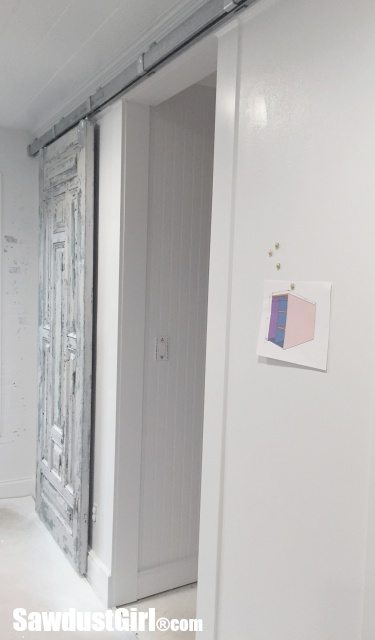
Studio Cork Wall
I ordered 1/4″ thick cork (and adhesive) from Bangor Cork. I was going to have seams no matter what because I wanted the whole wall covered with cork. I ordered the 24″ wide cork and initially planned on hanging it horizontally. I cut my first piece, held it up, decided I could probably not have any seams if I got creative. I decided to install it vertically and combine it with wood dividers and make it look like a board and battan wall — with cork inserts. I unrolled more cork from the roll and cut a new first piece. 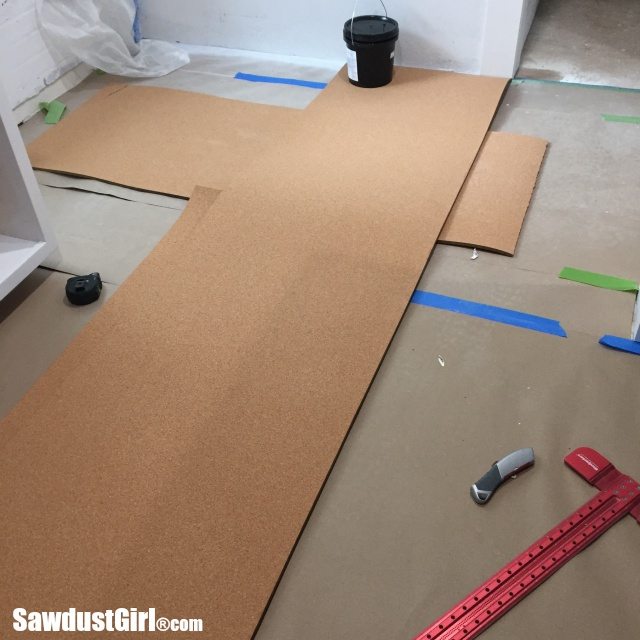
The adhesive was in a bucket and I had to get it onto the wall and spread it with a notched trowel. It wasn’t quite thick enough to make getting it from the bucket to the wall easy. I had blobs of adhesive on me, on the floor and then on my shoes which transferred to new areas of the floor when I walked around. I swore a lot during this project.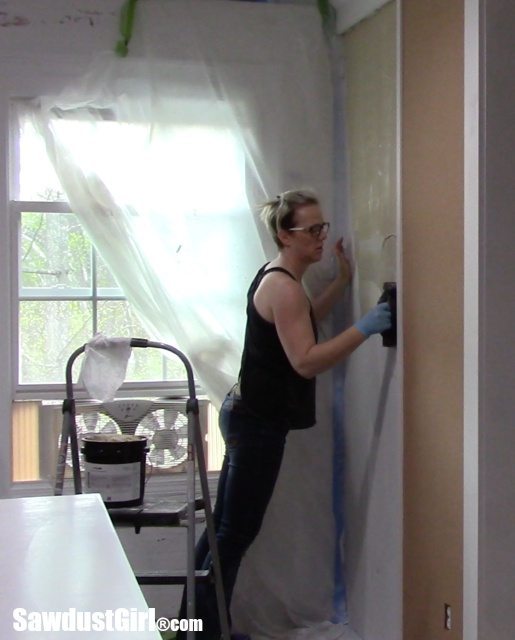
The next step was getting the cork onto the wall before the adhesive started to dry. The cork kept wanting to revert back to it’s rolled up state of existence and since I didn’t want seams I was working with an 8′ long piece. I had to flop it over my head to manage the whole piece and get it into position. The adhesive didn’t grab instantly which was a good thing because I wasn’t able to precisely position the by flipping it up off my head into place. 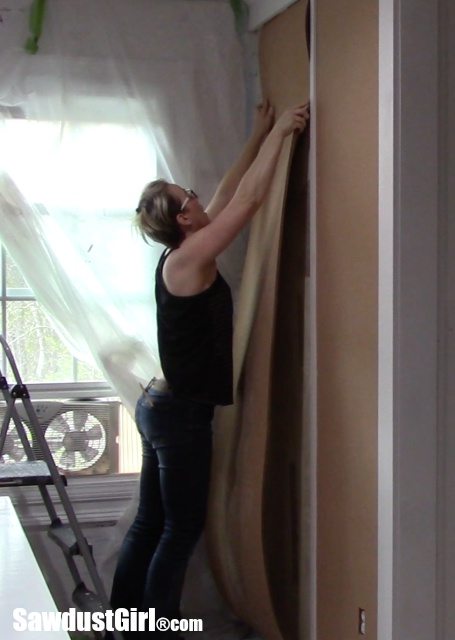
So it didn’t grab instantly which was good…and also not good. The whole panel kept slowly sliding down the wall. I pushed and held and waited and finally shot some nails into the top of the panel to hold it in place while the adhesive set. That worked. I shot the nails at the very top where the nail holes would be covered by moulding but the self healing aspect of the cork worked amazingly and you could barely see the nail holes.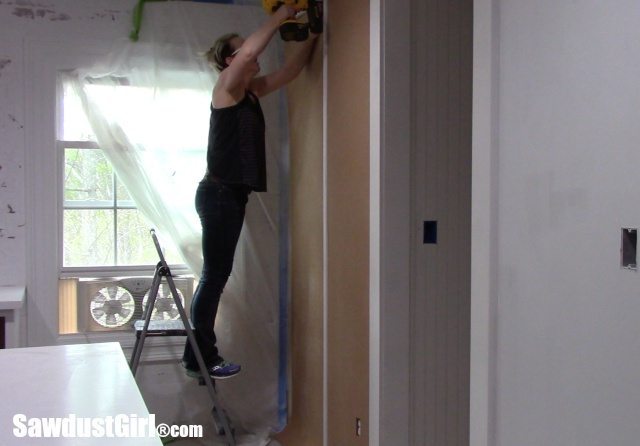
Once the nails were holding the panel in place I got to work rolling every inch of my 8′ tall cork wall. You’re supposed to roll it with pressure to press the cork into the adhesive. I rolled with all my might! I rolled up and down and side to side with my entire body weight against the roller. I don’t even know where this roller came from but it was in my shop so I used it. I’m pretty sure a bigger roller would have been more efficient and effective but I didn’t know how much work this was going to be so I figured the roller I had would work fine.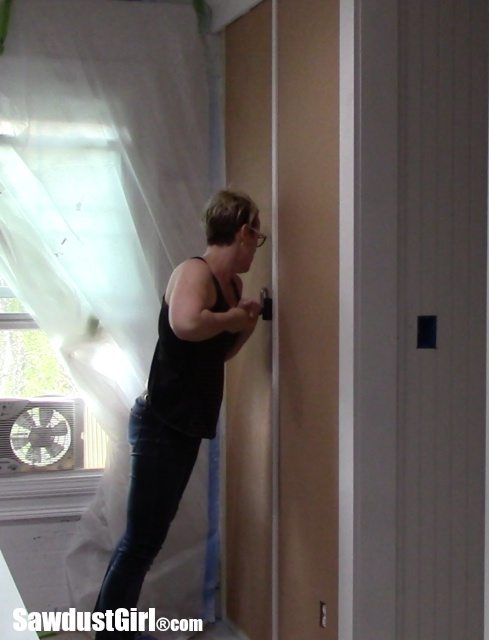
I planned out my wood dividers after installing the first cork wall panel. I used a 1×2 to separate the two panels and a wider one on the outside to mimic the door casing.
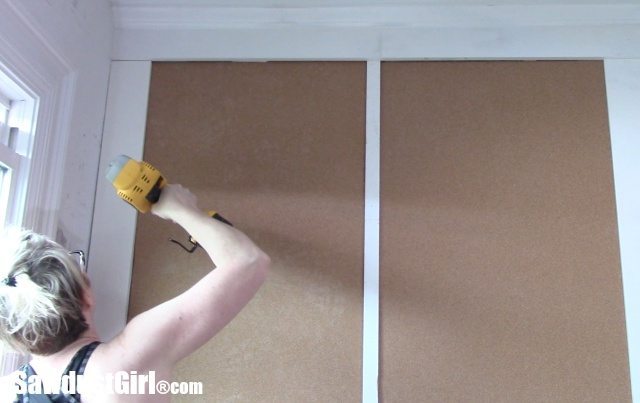
I installed the cork on the wall to the left of the closet doorway but because I cut my first piece of cork to fit the wall horizontally I didn’t have a long enough piece left to install on the wall to the right. I wasn’t sure I wanted cork on that portion of the wall anyway. Once the cork is painted you wouldn’t really notice one way or another and functionally I didn’t think I’d actually use the cork wall on that side of the door. 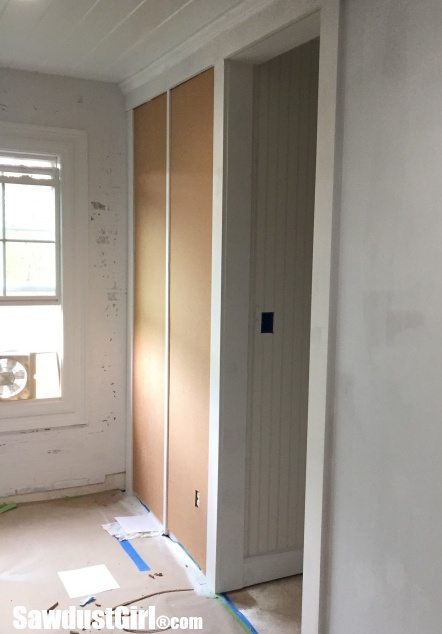 With the first panel, I followed the manufacturers instructions to roll the cork in the opposite direction than what it came rolled in to uncurl it. It didn’t work out so well for me as the cork broke/tore a bit. I installed it anyway hoping it would “self heal”. It didn’t so I used some wood putty to try and hide it and decided that it would hide just fine after it was painted.
With the first panel, I followed the manufacturers instructions to roll the cork in the opposite direction than what it came rolled in to uncurl it. It didn’t work out so well for me as the cork broke/tore a bit. I installed it anyway hoping it would “self heal”. It didn’t so I used some wood putty to try and hide it and decided that it would hide just fine after it was painted.
With the confidence that I could hide the seam with wood putty I decided to go ahead and use the last of my cork on the right side of the closet door. Why not?
I nailed the cork at the seam to keep it as tight as possible. Then I smothered it with wood putty.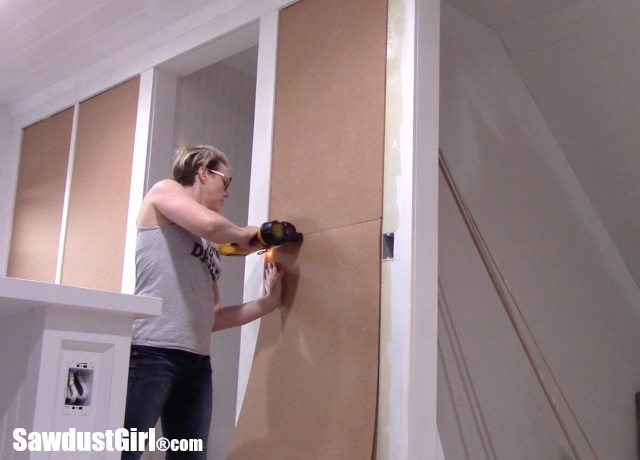 I had to add another wide board to match the other side and be consistent with my whole board and battan look. I covered the junction box, then went back later and pulled it out from the back of the wall which is still open.
I had to add another wide board to match the other side and be consistent with my whole board and battan look. I covered the junction box, then went back later and pulled it out from the back of the wall which is still open.
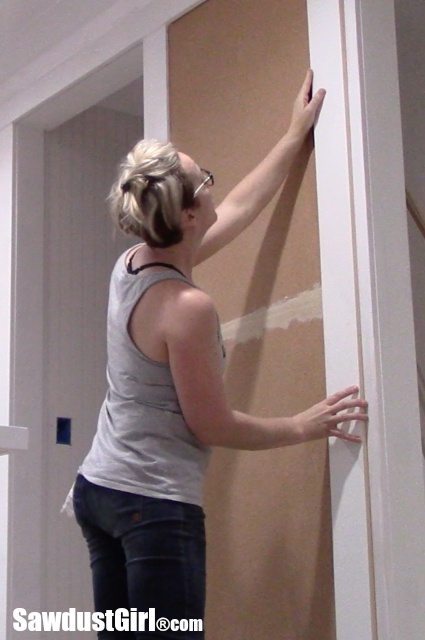
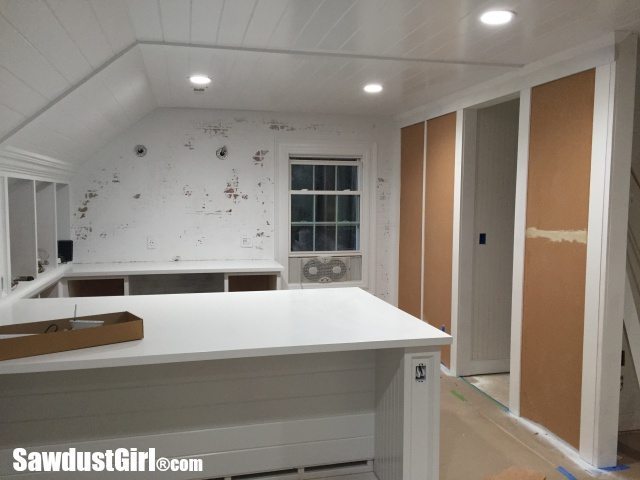
Just a quick FYI on the electrical outlet on this wall. I used an extension box to pull the outlet to the front of my 1/4″ thick cork.
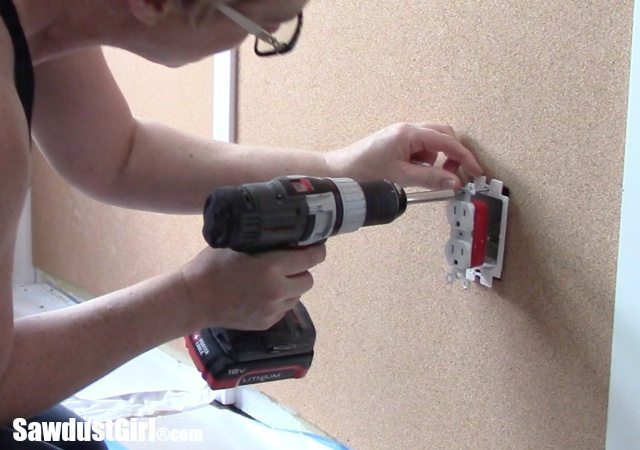
I wanted the barn door track to stick out beyond the wall and the closet door casings which left me with some gaps to fill either with caulk or moulding. 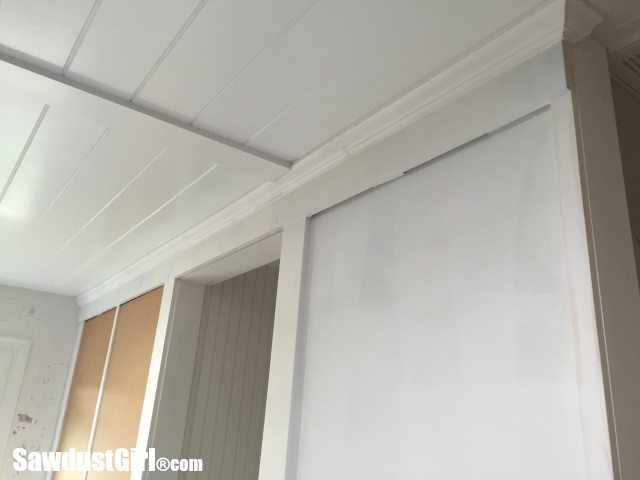
My philosophy is that you can never have too much moulding. I used a little glass bead moulding along the top of the entire cork wall, wrapping it around the battan boards and door casings.
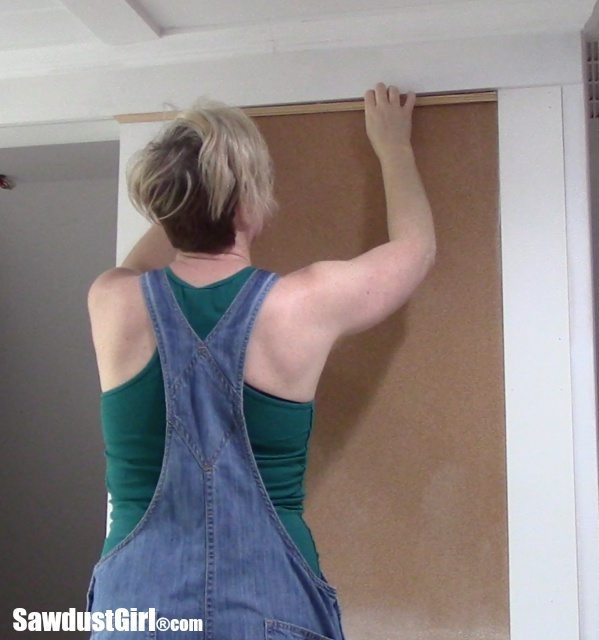
I sanded down the wood putty on my cork seams and prepped my Graco sprayer with primer.
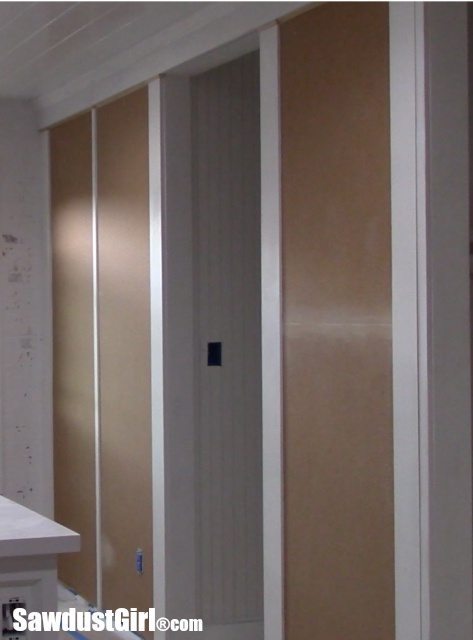 I think I did two coats of primer and 3 coats of paint.
I think I did two coats of primer and 3 coats of paint.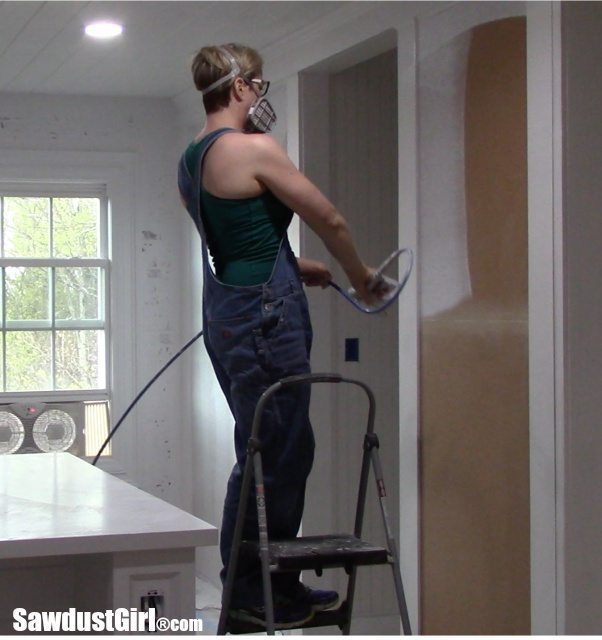 The cork is so porous that it took a lot of coats to get full coverage.
The cork is so porous that it took a lot of coats to get full coverage. 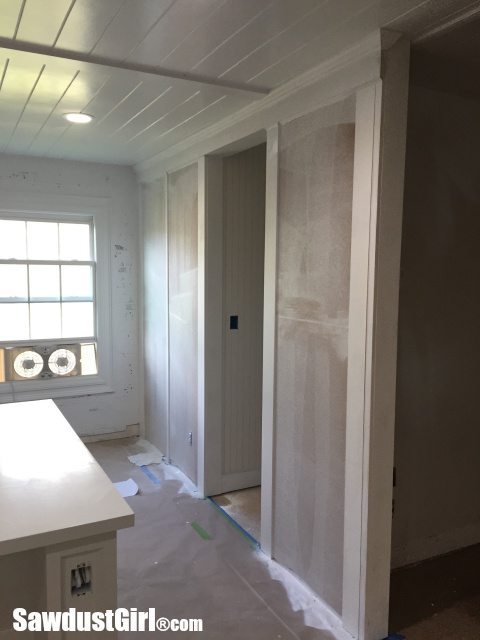
I needed to put the junction box back into position after covering it up with a new 1×5 so I removed it from the open wall behind and cut out the hole with an oscillating tool. Easy! 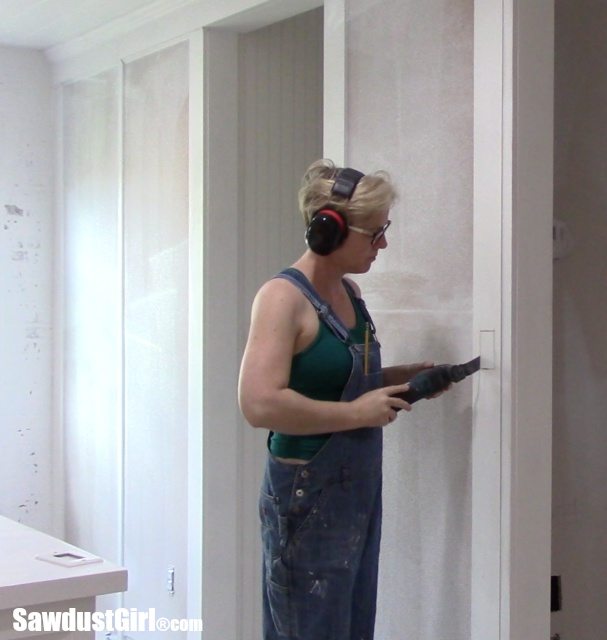
I still haven’t installed a switch though so I just conveniently hide the hole with my barn door for now.
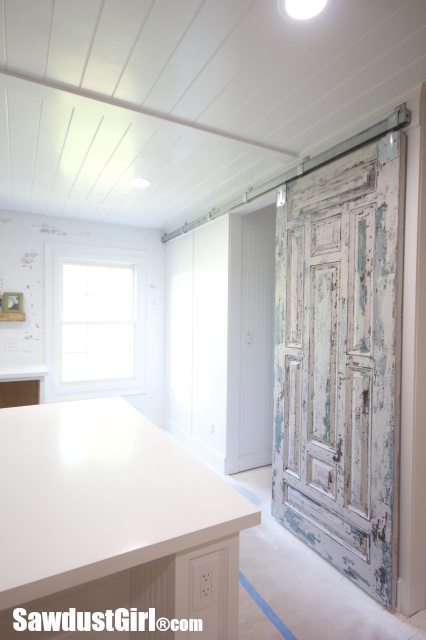
The cork wall is now ready for use and is currently housing the plans for my next build.

The barn door slides from one side of the wall to the other without bothering my pins or papers so I both the cork wall and the barn door are fully functional at all times.
 And that glass bead moulding is just another little detail that makes the “big picture” look extra cool when you look for it.
And that glass bead moulding is just another little detail that makes the “big picture” look extra cool when you look for it.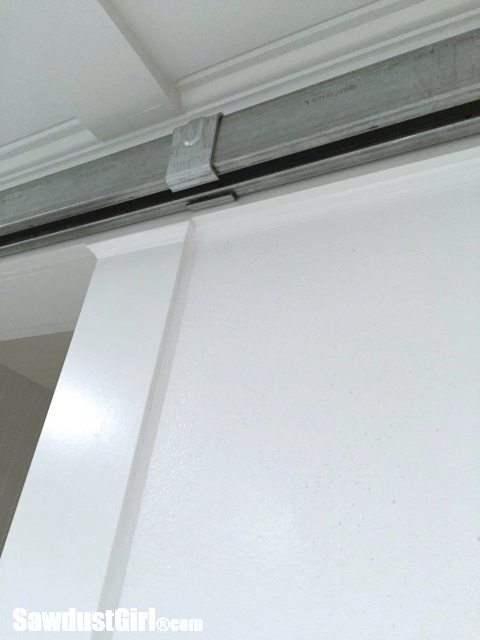
Most likely I will use my cork wall to create a more “artsy” design element when I’m using my studio as a studio. While I’m still building out the space it’s a good place to pin my plans so they don’t get lost in the shuffle as is likely to happen when I just set them down amidst 100 tools.
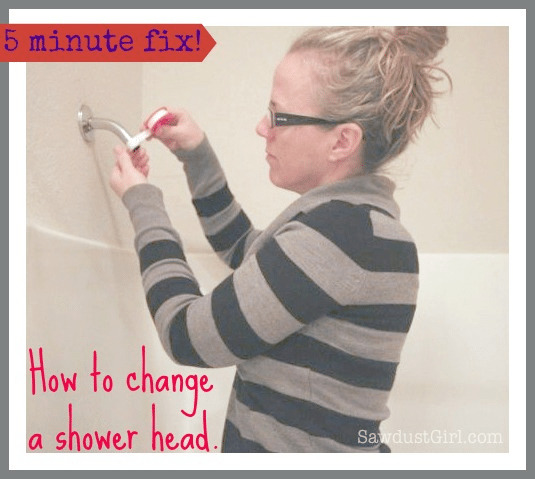
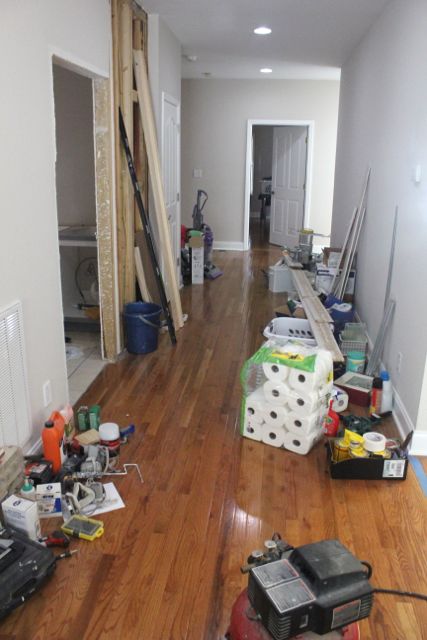
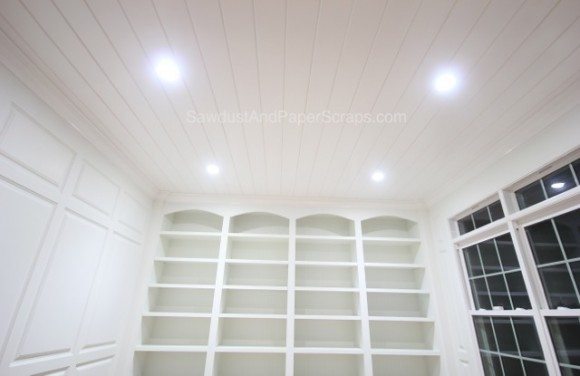
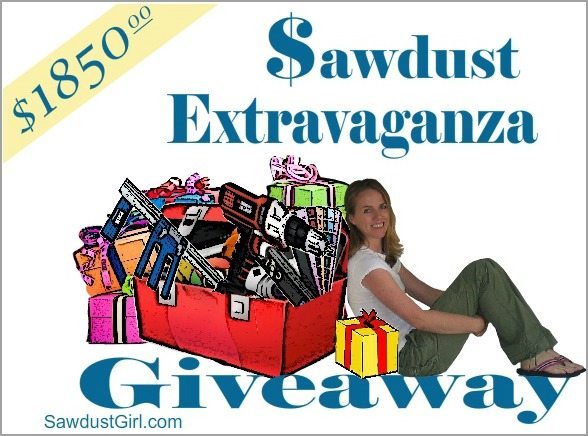
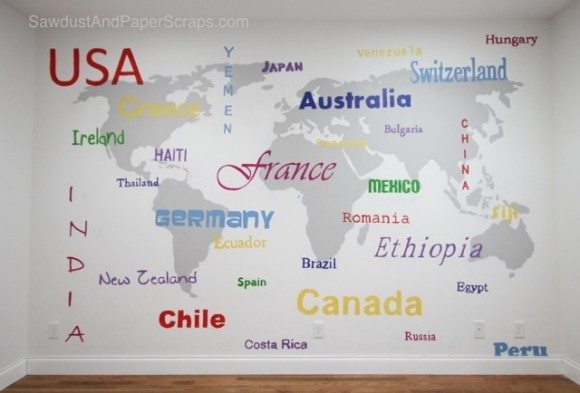
Having the whole surface painted provided the look I wanted while allowing the cork to serve it’s purpose so I don’t mind if the holes are more visible up close. The alternative was not painting the cork which didn’t provide the look I wanted.
The holes are more visible in the painted cork but they close up somewhat.
I’m guessing the thumbtack holes self heal even with paint on the surface? I never woulda thunk!
I thought about doing that in some skeleton wainscot in my office using 12 inch adhesive squares, but I was afraid that painting the cork would make it stiff and not have that springy, self-healing quality. Let me know how it holds up!